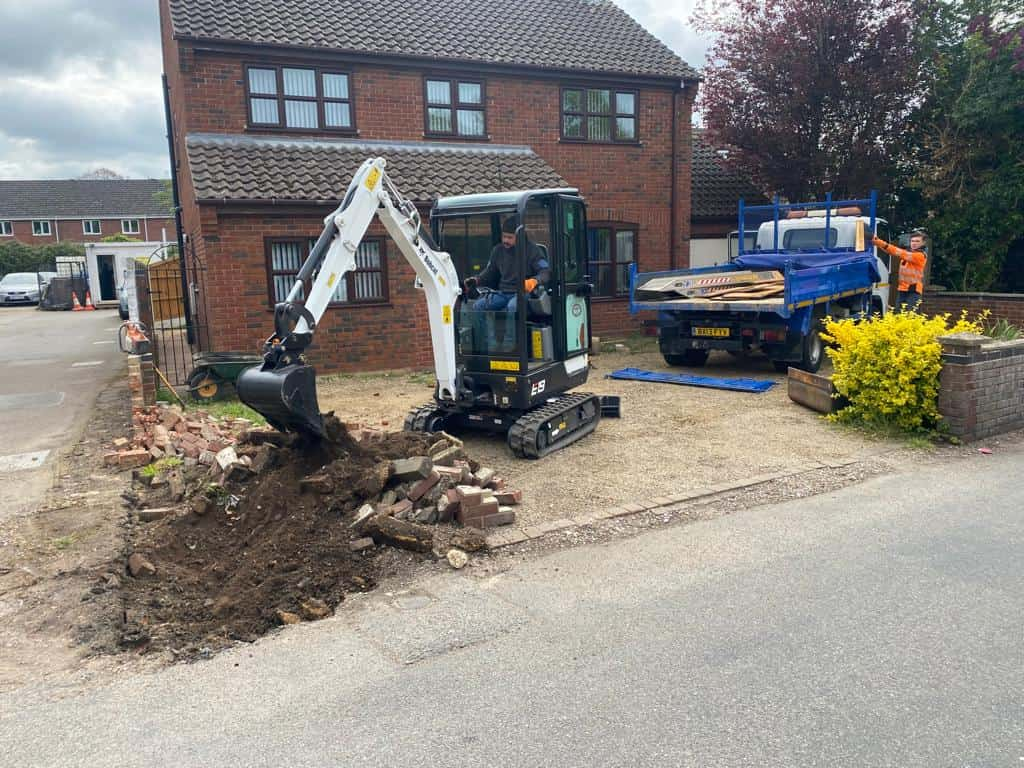How to Upgrade an Old Concrete Driveway with Tarmac
Introduction
Over time, even the most solid concrete driveways begin to show their age. Cracks, surface wear, discolouration, and drainage issues are all signs that your old driveway is ready for an upgrade. If you’re looking for a more modern, durable, and cost-effective solution, tarmac (also known as tarmacadam) could be the ideal option.
At Thrapston Driveways & Patios, we’ve helped homeowners across Northamptonshire transform tired concrete driveways into smooth, functional, and attractive entrances using high-quality tarmac. In this guide, we’ll explain how to upgrade your existing concrete driveway with tarmac and why it’s a smart investment for both performance and kerb appeal.
Key Takeaways
- Tarmac offers a sleek, low-maintenance alternative to ageing concrete
- Proper surface preparation is essential for a long-lasting result
- Drainage, edging, and base condition must be assessed before resurfacing
- Professional installation ensures durability and structural integrity
- Tarmac driveways improve aesthetics and boost property value
Why Consider Tarmac Over Concrete?
Tarmac is a popular choice in the UK for driveways due to its flexibility, resilience, and clean appearance. While concrete can crack under stress or temperature fluctuations, tarmac is more forgiving thanks to its slightly elastic nature.
Benefits of tarmac include:
- Faster installation compared to other materials
- Smooth, skid-resistant finish
- Easy to repair and maintain
- Compatible with a variety of edging styles and borders
- Works well with sloped or irregular surfaces
When installed professionally, a tarmac surface can last up to 20 years or more with minimal maintenance—making it an excellent long-term solution.
Step-by-Step: Upgrading Your Concrete Driveway to Tarmac
Upgrading from concrete to tarmac isn’t just a matter of laying one over the other. The process must be carefully planned to ensure stability, drainage, and longevity.
1. Site Inspection and Assessment
Before work begins, we carry out a full assessment of the existing driveway. This includes:
- Checking the structural integrity of the concrete base
- Assessing drainage and water run-off
- Identifying any cracks, heaving, or subsidence
- Measuring levels, edges, and access points
This step determines whether the existing concrete can act as a base or needs partial or full removal.
2. Removing or Preparing the Existing Concrete
Depending on the condition of the concrete, we’ll either:
- Break and remove the existing surface entirely, or
- Use the solid concrete as a sub-base, with adjustments made to ensure adequate bonding and levelling
In some cases, a bonding layer or tack coat may be applied to help the tarmac adhere properly to the concrete beneath.
3. Installing a Strong, Level Sub-Base
A stable sub-base is essential. If the old concrete is removed, we’ll install and compact a new Type 1 MOT aggregate layer to form a strong foundation. This layer helps with:
- Load-bearing support
- Preventing surface deformation
- Managing drainage effectively
We also make sure that the base is sloped correctly to direct water away from your property.
4. Laying the Tarmac Surface
Once the base is ready, hot tarmac is laid, levelled, and compacted using a mechanical roller. Depending on the design and usage requirements, a single or double layer (base and wearing course) may be applied.
At this stage, we also pay attention to:
- Edging and borders using brick, block, or stone for a decorative finish
- Drainage channels to avoid pooling or water damage
- Smooth transitions between the driveway and paths or roads
5. Finishing Touches and Curing
After the tarmac is laid, it needs 24–48 hours to cure, depending on the weather conditions. During this time, it’s important to avoid heavy use or turning car tyres on the spot, as this can scuff the surface.
We’ll advise you on best practices for aftercare, including:
- Avoiding sharp objects or oil spills
- Occasional jet washing to remove debris
- Re-applying sealant every few years to maintain appearance
Aesthetic Options and Enhancements
Tarmac doesn’t have to mean plain black. You can enhance the appearance of your new driveway with:
- Decorative edging using block paving or stone setts
- Contrasting colour tarmac (e.g. red or grey options)
- Gravel borders or planting areas for soft landscaping
- Dropped kerbs for smooth vehicular access
These upgrades not only improve visual appeal but also add character and value to your home.
Conclusion
Upgrading an old concrete driveway with tarmac is a practical and visually pleasing solution that offers long-term durability, lower maintenance, and a fresh new look. Whether your existing driveway is cracked, outdated, or no longer fit for purpose, tarmac provides a reliable upgrade that won’t break the bank.
At Thrapston Driveways & Patios, we specialise in transforming outdoor spaces across Thrapston and Northamptonshire. If you’re considering a driveway upgrade, get in touch with our team today for a free consultation and expert guidance. We’ll help you achieve a smooth, safe, and stylish driveway that stands the test of time.
Call us on: 01832 773 672
Click here to find out more about Thrapston Driveways & Patios
Click here to complete our contact form and see how we can help with your driveways.

